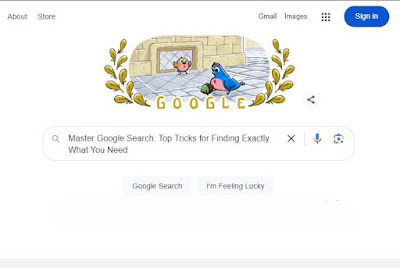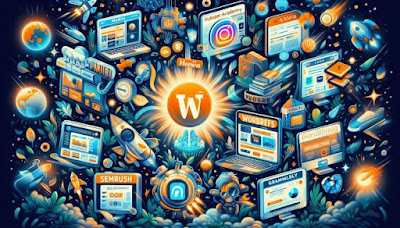Master Google Search: Top Tricks for Finding Exactly What You Need
Google is a powerful tool, but are you using it to its full
potential? From pinpointing specific details to uncovering hidden gems on the
web, these Google search tricks can elevate your search game. Here’s how to
refine your queries and get more precise results.
1. Use Quotation Marks for Exact Matches
If you’re looking for a specific phrase or quote, enclose it in quotation marks. This tells Google to search for the exact words in the exact order. For example:
- Search Query: "best chocolate chip cookie recipe"
- Result: Results will only include pages that have the exact phrase "best chocolate chip cookie recipe."
2. Exclude Words with a Minus Sign
To exclude certain terms from your search, use the minus sign (-). This is useful when you want to refine your search by removing irrelevant results.
- Search Query: apple -fruit
- Result: Results about Apple Inc. rather than the fruit.
3. Use the Asterisk as a Wildcard
The asterisk (*) acts as a placeholder for any word. It’s handy when you’re unsure of a word or want to include any term in your search.
- Search Query: "top * to visit in Paris"
- Result: Results could include “top places to visit in Paris” or “top landmarks to visit in Paris.”
4. Search Within a Site
To search within a specific website, use the site: operator followed by the website URL. This helps when you want to find information from a particular source.
- Search Query: site:nytimes.com climate change
- Result: Results from the New York Times related to climate change.
5. Find Related Sites
To discover websites similar to one you already like, use the related: operator.
- Search Query: related:amazon.com
- Result: Results will include websites similar to Amazon.
6. Search by File Type
Looking for a specific type of document? Use the filetype: operator to find PDFs, Word documents, and more.
- Search Query: filetype:pdf digital marketing strategies
- Result: PDF files related to digital marketing strategies.
7. Use Google’s Built-In Calculator
Google can function as a calculator. Type in your math problem directly into the search bar.
- Search Query: 345 * 67
- Result: Google will display the result of the multiplication directly.
8. Track Packages and Flights
You can get updates on your package delivery or flight status directly from Google.
- Package Tracking: Enter your tracking number in the search bar.
- Flight Status: Type in the flight number, e.g., AA 1234.
9. Convert Units
Google can quickly convert units for you. Type in the conversion you need.
- Search Query: 10 miles to kilometers
- Result: Google will show you the conversion result.
10. Use the Define Operator
Need a definition? Use the define: operator to get the meaning of a word.
- Search Query: define:serendipity
- Result: Google will display the definition of the word "serendipity."
11. Find Time in Different Cities
To check the time in another city, type the city name followed by “time.”
- Search Query: time in Tokyo
- Result: Google will show the current time in Tokyo.
12. Use the “OR” Operator
When you want to include multiple terms in your search, use the OR operator between them.
- Search Query: travel tips OR vacation ideas
- Result: Results will include either travel tips or vacation ideas.
Conclusion
Google's search capabilities extend far beyond basic
queries. By utilizing these tricks, you can enhance your search efficiency and
find the information you need more quickly and accurately. Next time you need
to dig deep into the web, remember these tips to streamline your search
process!





















